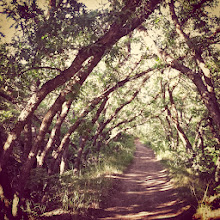
Hm, where could he be headed next?
Apparently the Thomas Beale Cipher is based off a real American legend. The "Beale ciphers" are a set of three ciphertexts originating from a pamphlet which allegedly state the contents, location, and heirs to a treasure buried in Bedford, Virginia in 1820. Today the treasure of silver, gold, and jewels is estimated to be worth over $65 million dollars. Beale gave the box containing the encrypted messages to a local innkeeper, and then disappeared, never to be heard from again.


I wonder why I've never heard of this before? Maybe because it's a hoax? I mean, why would a man with such a vast fortune choose to bury it, create encryted messages about its location, give said messages to an innkeeper who comes in contact with many travelers, and then "disappear". What could be the motive for doing it? Why wouldn't Beale simply enjoy his wealth rather than try and entice others into finding it? Oh well, all doubts aside, there is nothing more tantalizing than the possibility of buried treasure.


Located inside Allen's animation are 16 hidden messages which are clues to the characters' secrets. While watching I noticed over 20 unusually placed numbers, and some backward sentences and possible anagrams that I know are connected to the hidden messages, but I don't even know where to begin piecing them together. Spot anything yourself?
"160"

"12"

"211"

"111"

"88" & Backwards Words

"131"

"110"

"Meet Me At Platform Seven"

"Beth Gouldog" is the Key? Is her name a possible anagram?

Most of the animation is rotoscoped, so the movement is entirely lifelike, however at times it is very simplified, like the Ticket Taker and Woman who are plain 2D cutouts.


I like this practical approach to animating which often becomes tedious and burdensome in its frame-by-frame execution (and it's important to emphasize the story over flashy effects), yet despite The Thomas Beale Cipher's less-than-labor-intensive approach to animation, important details such as the glance of the eyes, or a reflection of light passing over glasses, continue to add to the film's singular style and mood.


The constantly moving images in the movie hearken back to a time of jittery film reels and the clickity-clack of swaying trains, back when trains were a viable form of transportation. I sense Mr. Allen has a great affinity for trains seeing as how he uses them himself to travel within the United States. Not a convenient nor inexpensive feat. I do wish that we still had a transcontinental passenger train system of some kind in the US, instead of only highways.


I can't find much biographical information on Mr. Allen other than his impressive resume you may check out here, but he does seem to be from Alaska, as evidenced from the "Ode to Andrew's home state" opening sequence he made for the 2010 Anchorage International Film Festival:
You can really see his signature style peek through. Allen also helped bring about The Saxifrage Project, an Art Installation project to help rural Alaskan high school students express what most inspires them.


For his day job Allen aids companies in creating professional branding, design, animation, and interactive marketing tools that utilize good story telling techniques. Wow, he is quite the multi-talented young man. Is there anything he hasn't tried? If not, I'm sure we will see his competent outcome in the near future. Good luck with all your future endeavors Mr. Allen, and keep telling good stories.
~S
















































































